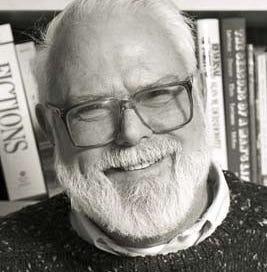Don Murray Masterclass #4: Long Sentences
Writing a long sentence is no sin, but writing a confusing sentence is.
Note: This is the fourth article analyzing Don Murray’s essay, “Teach Writing as a Process not Product." To read the rest of the series, click here.
Short sentences are easy to read because they reduce cognitive load. A sentence is a thought; the longer the sentence, the more information the reader must hold in their working memory before the thought is complete. This process can be mentally taxing, making the reader less likely to understand the writer’s point.
However, while short sentences are less mentally taxing, writers can’t rely exclusively on them for clarity. Too many short sentences in a row make the writing unnatural and simplistic.
The colonel arrived. The captain met him on the helipad. The colonel exited the helicopter. The captain saluted. The colonel saluted back. He left to meet the general. The captain was relieved.
Ugh.
Long sentences avoid these problems but introduce their own, mainly confusion.
The captain, who saluted after meeting the colonel, who had come to meet the general and returned his salute on the helipad after exiting the helicopter, was relieved when he left to meet the general.
Ugh again.
The challenge is to use longer sentences for variety and rhythm without confusing the reader. Murray shows us how.
Consider this example (I’ve put the sentence word counts in brackets).
[25] How do you motivate your student to pass through this process, perhaps even pass through it again and again on the same piece of writing?
[4] First by shutting up. [7] When you are talking he isn’t writing. [14] And you don’t learn a process by talking about it, but by doing it.
This four-word sentence is my favorite in this essay. But it’s made even better by the 25-word sentence preceding it. The contrast between the two in length and tone gives the passage a wonderful rhythm.
Murray also constructs long sentences that stand on their own and remain clear.
[49] [A] Our students knew it wasn’t literature when they passed it in, and [B] our attack usually does little more than confirm their lack of self-respect for their work and for themselves; [C] we are as frustrated as our students, for [D] conscientious, doggedly responsible, repetitive autopsying doesn’t give birth to live writing.
This 49-word sentence remains readable because each clause (A–D) expresses a distinct thought, but the four thoughts are tightly related and ordered logically. Murray’s use of simple language adds to the sentence’s clarity.
Here are two more examples:
[11] We have to be patient and wait, and wait, and wait. [38] [A] The suspense in the beginning of a writing course is agonizing for the teacher, but [B] if we break first, if we do the prewriting for our students they will not learn the largest part of the writing process.
[33] We have to respect the student, not for his product, not for the paper we call literature by giving it a grade, but for the search for truth in which he is engaged.
Murray’s secret weapons are parallelism and repetition—maintaining the same grammatical structure and repeating keywords to create cohesion. In the second sentence, the parallel if we/if we/they will establish a cause-and-effect structure (if the teacher breaks, the student doesn’t learn). Likewise, in the third sentence, not for/not for/but for keeps everything linked to the opening clause about respecting the student.
He uses the same techniques in this 54-word sentence, the last and longest of the essay.
[54] What they do require is a teacher who will respect and respond to his students, not for what they have done, but for what they may do; not for what they have produced, but for what they may produce, if they are, given an opportunity to see writing as a process, not a product.
Key Takeaways:
Short sentences improve clarity because they are easy to read.
But too many short sentences feel choppy and simplistic.
Long sentences can add rhythm and nuance. They work best when they’re well-organized, use simple language, and take advantage of literary techniques, such as contrast and parallelism, that improve clarity.
Writing a long sentence is no sin, but writing a confusing sentence is.



